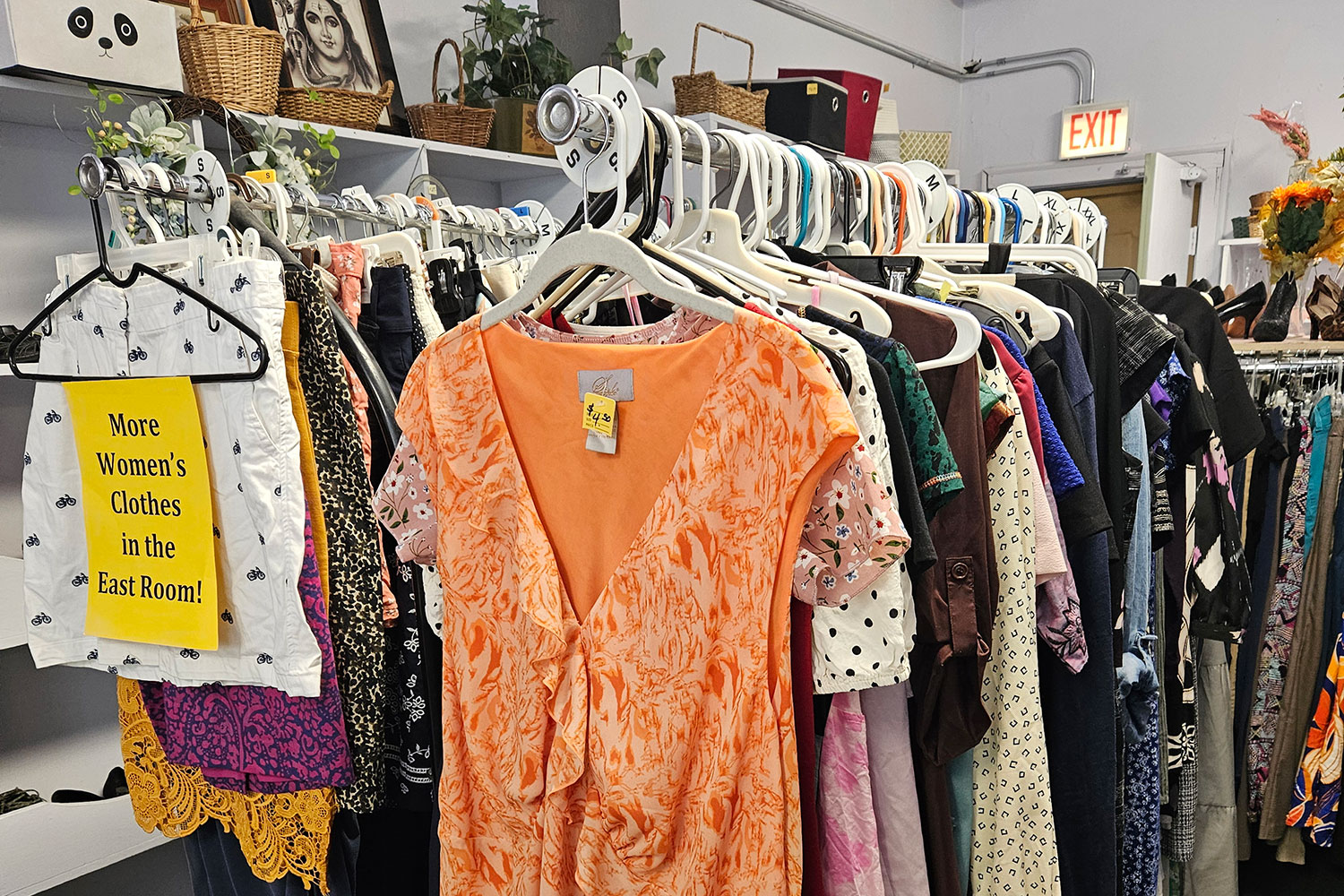June Brownell sweeps aside the curtain of the dressing room at New to You, a Rogers Park thrift shop, and steps out wearing a flowered skirt, a green top, and a sun hat. It isn’t just a new outfit for Brownell; it was a new identity. Brownell is beginning the process of transitioning from male to female, and this is her first foray into dressing like a woman.
Like many people who were AMAB (that’s Assigned Male At Birth), Brownell, 25, admits that she doesn’t have “a lot of feminine traits.” She’s six feet two inches tall. Her feet are size 13. She’s “a bit nervous” about shopping in women’s boutiques, so to begin her sartorial journey across the gender divide, she came to Dress Your New Body, a semi-monthly event for trans women in the early stages of transition.
Dress Your New Body is the brainchild of Missy Thrasher-Lyon, a cis woman married to a trans woman. Thrasher-Lyon combs through the thrift shop racks, looking for clothes that match the style her clients want to present, and, more importantly, that match their body types. With their broader shoulders and narrower hips, trans women often have difficulty fitting into clothing designed for cis women.

“I was just inspired by hanging out with my trans friends and figuring out how to shop,” Thrasher-Lyon says. “This is the first event like this in the city. There are trans clothing swaps, but no one else is doing personal styling.”
Rogers Park “is very trans,” Thrasher-Lyon says. The thrift shop is owned by the next door United Church of Rogers Park, which Thrasher-Lyon attends, and whose congregation she estimates is “25 percent trans.”
“The church has been so fully behind it, it’s made me come to think of this as a ministry,” she says.
Thrasher-Lyon’s clients have ranged from an 11-year-old seeking a non-binary identity to a 50-year-old coming out later in life.

“One of the things that brings me the most joy is watching people developing their style in front of their eyes,” she says. “The non-binary 11-year-old was the cutest experience of my life. It was really great to see them figuring it out so young and with complete support.”
Willow Mathis, 29, who has been out “for about two, three months-ish” at her job at Whole Foods, and began hormone replacements a month and a half ago, saw a flyer for Dress Your New Body on the wall of a bar and thought it was the solution for adorning her soon-to-be-altered figure: “I know my body’s going to be changing a lot in the next few months, so it’s good to have that taken into consideration.” Mathis is going for an indie/alt look. With the help of her assistant, Julie Olivo — who is non-binary — Thrasher-Lyon has filled a bin with clothing in Mathis’s style. She pulls out a dress, a blouse, and a necklace and hands them to Mathis.
“I feel like that could be a great summer look,” she says.
“I love that top,” Mathis raves.
Mathis steps into the dressing room, and emerges wearing a yellow dress that shows off her chest and a tattooed arm.
“This can be a gateway drug into showing skin,” Thrasher-Lyon comments.
“It feels good,” Mathis says. “It sits a little low. I don’t even like dresses that much, but it’s so much fun just swishing around. I love it, though. I’m really going to have to grow into it, as far as chest-wise goes.”
Mathis goes back into the dressing room and returns wearing a blouse tied off to show her bare midriff.
“Cu-ute,” declares Thrasher-Lyon.
Meanwhile, Brownell is trying on a necklace. She’s a little dissatisfied because the pendant falls on the neckline of her dress.
“I think I’m going to need a new chain for this,” Brownell says. “Either shorter or longer.”
(Watching this, as a cis male, I feel less qualified than anyone in the room to comment on the clothing, so I just keep my mouth shut and take notes.)
We live in an era of fluid gender identities, an era in which we have learned to go “Beyond He and She,” as a magazine cover once declared. It’s part of the American credo that we’re not defined by the circumstances of our birth, so what could be more American than helping AMABs become women, or AFABs become men, or either one become non-binary? Freedom from the genders into which we were born is the newest freedom we’ve discovered in this country. Both Mathis and Brownell feel more like themselves after stepping out of the dressing room in feminine clothes.
“It’s kind of like finding my voice through fashion,” Mathis says.
“It feels nice,” says Brownell. “You look at it in the mirror and go, ‘Oh.’ It’s a little bit of happiness.”



